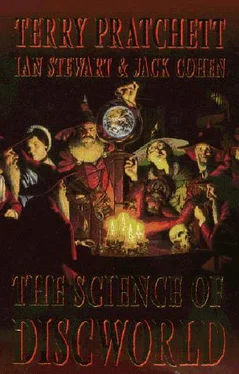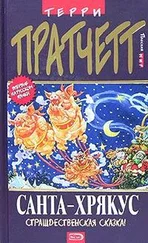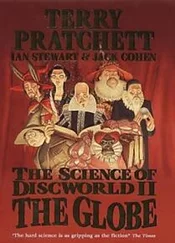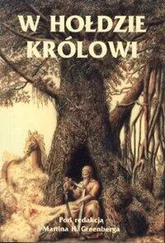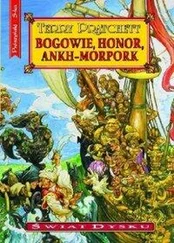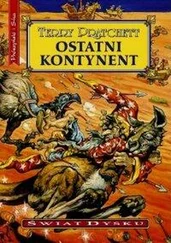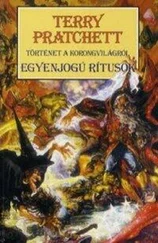Terry Pratchett - Science of Discworld
Здесь есть возможность читать онлайн «Terry Pratchett - Science of Discworld» весь текст электронной книги совершенно бесплатно (целиком полную версию без сокращений). В некоторых случаях можно слушать аудио, скачать через торрент в формате fb2 и присутствует краткое содержание. Жанр: Фантастика и фэнтези, на английском языке. Описание произведения, (предисловие) а так же отзывы посетителей доступны на портале библиотеки ЛибКат.
- Название:Science of Discworld
- Автор:
- Жанр:
- Год:неизвестен
- ISBN:нет данных
- Рейтинг книги:4 / 5. Голосов: 1
-
Избранное:Добавить в избранное
- Отзывы:
-
Ваша оценка:
- 80
- 1
- 2
- 3
- 4
- 5
Science of Discworld: краткое содержание, описание и аннотация
Предлагаем к чтению аннотацию, описание, краткое содержание или предисловие (зависит от того, что написал сам автор книги «Science of Discworld»). Если вы не нашли необходимую информацию о книге — напишите в комментариях, мы постараемся отыскать её.
Science of Discworld — читать онлайн бесплатно полную книгу (весь текст) целиком
Ниже представлен текст книги, разбитый по страницам. Система сохранения места последней прочитанной страницы, позволяет с удобством читать онлайн бесплатно книгу «Science of Discworld», без необходимости каждый раз заново искать на чём Вы остановились. Поставьте закладку, и сможете в любой момент перейти на страницу, на которой закончили чтение.
Интервал:
Закладка:
'They're not even moving,' said Ridcully. 'Just bobbing about.'
'Blobbing about, haha,' said the Senior Wrangler.
'Could we ... help them in some way?' said the Lecturer in Recent Runes. 'You know ... to become better blobs? I fear we have some responsibility.'
'They may be as good as blobs get,' said Ridcully. 'What's up with that Rincewind fellow?'
They turned. In its circle of smoke, the suited figure was making frantic running motions.
'Do you think, on reflection, that it might not have good idea to miniaturize his image in Roundworld?' said Ridcully.
'It was the only way we could get him into that little rock pool HEX wanted us to look at, sir,' said Ponder. 'He doesn't have to be any particular size. Size is relative.'
'Is that why he keeps calling out for his mother?'
Ponder went over to the circle and rubbed out a few important runes. Rincewind collapsed on the floor.
'What idiot put me in there? he said. 'Ye gods, it's awful! The size of some of those things!'
'They're actually tiny,' said Ponder, helping him up.
'Not when you are smaller than them!'
'My dear chap, they can't possibly hurt you. You have nothing to fear but fear itself'
'Oh, is that so? What help is that? You think that makes it better? Well, let me tell you, some of that fear can be pretty big and nasty...'
'Calm down, calm down?'
'Next time I want to be big, understand?'
'Did they try to communicate with you in any way?'
'They just flailed away with great big whiskers! It was worse than watching wizards arguing!'
'Yes, I doubt if they are very intelligent.'
'Well, nor are the rock pool creatures.'
Tin just wondering,' said Ponder, wishing he had a beard to stroke thoughtfully, 'if perhaps they might ... improve with keeping ...'
DESPITE WHICH ...
THAT BLUE IN THE ROUNDWORLD SEA isn't a chemical, well, not in the usual Simple chemical' sense of the word. It's a mass of bacteria, called cyanobac-teria. Another name for them is 'blue-green algae', which is wonderfully confusing. Modern so-called blue-green algae are usually red or brown, but the ancient ones probably were blue-green. And blue-green algae are really bacteria, whereas most other algae have cells with a nucleus and so are not bacteria. The blue-green colour comes from chlorophyll, but of a different kind from that in plants, together with yellow-orange chemicals called carotenoids.
Bacteria appeared on Earth at least 3.5 billion years ago, only a few hundred million years after the Earth cooled to the point at which living creatures could survive on it. We know this because of strange layered structures found in sedimentary rocks. The layers can be flat and bumpy, they can form huge branched pillars, or they can be highly convoluted like the leaves in a cabbage. Some deposits are half a mile thick and spread for hundreds of miles. Most date from 2 billion years ago, but those from Warrawoona in Australia are 3.5 billion years old.
To begin with, nobody knew what these deposits were, In the 1950s and 1960s they were revealed as traces of communities of bacteria, especially cyanobacteria.
Cyanobacteria collect together in shallow water to form huge, floating mats, like felt. They secrete a sticky gel as protection against ultraviolet light, and this causes sediment to stick to the mats. When the layer of sediment gets so thick that it blocks out the light, the bacteria form a new layer, and so on. When the layers fossilize they turn into stromatolites, which look rather like big cushions. The wizards haven't been expecting life. Roundworld runs on rules, but life doesn't, or so they think. The wizards see a sharp discontinuity between life and non-life. This is the problem of expecting becomings to have boundaries, of imagining that it ought to be easy to class all objects into either the category 'alive' or the category 'dead'. But that's not possible, even ignoring the flow of time, in which 'alive' can become 'dead', and vice versa. A 'dead' leaf is no longer part of a living tree, but it may well have a few revivable cells.
Mitochondria, now the part of a cell that generates its chemical energy, once used to be independent organisms. Is a virus alive? Without a bacterial host it can't reproduce, but neither can DNA copy itself without a cell's chemical machinery.
We used to build 'simple' chemical models of living processes, in the hope that a sufficiently complex network of chemistry could 'take off', become self-referential, self-copying, by itself There was the concept of the 'primal soup', lots of simple chemicals dissolved in the oceans, bumping into each other at random, and just occasionally forming something more complicated. It turns out that this isn't quite the way to do it. You don't have to work hard to make real-world chemistry complex: that's the default. It's easy to make complicated chemicals. The world is full of them. The problem is to keep that complexity organized.
What counts as life? Every biologist used to have to learn a list of properties: ability to reproduce, sensitivity to its environment, utilization of energy, and the like. We have moved on. 'Autopoeisis', the ability to make chemicals and structures related to one's own reproduction, is not a bad definition, except that modern life has evolved away from those early necessities. Today's biologists prefer to sidestep the issue and define life as a property of the DNA molecule, but this begs the deeper question of life as a general type of process. It may be that we're now defining life in the same way that 'science fiction' is defined, it's what we're pointing at when we use the term.
The idea that life could somehow be self-starting is still controversial to many people. Nevertheless, it turns out that finding plausible routes to life is easy. There must be at least thirty of them.
It's hard to decide which, if any, was the actual route taken, because later lifeforms have destroyed nearly all the evidence. This may not matter much: if life hadn't taken the route that it did, it could easily have taken one of the others, or one of the hundred we haven't thought of yet.
One possible route from the inorganic world to life, suggested by Graham Cairns-Smith, is clay. Clay can form complicated microscopic structures, and it often 'copies' an existing structure by adding an extra layer to it, which then falls off and becomes the starting point of a new structure. Carbon compounds can stick on to clay surfaces, where they can act as catalysts for the formation of complex molecules of the kind we see in living creatures, proteins, even DNA itself. So today's organisms may have hitched an evolutionary ride on clay.
An alternative is Gunther Wachterhauser's suggestion that pyrite, a compound of iron and sulphur, could have provided an energy source suitable for bacteria. Even today we find bacteria miles underground, and near volcanic vents at the bottom of the oceans, which power themselves by iron/sulphur reactions. These are the source of the 'upflow of poisonous minerals' noticed by Rincewind. It's entirely conceivable that life started in similar environments.
A potential problem with volcanic vents, though, is that every so often they get blocked, and another one breaks out somewhere else. How could the organisms get themselves safely across the intervening cold water? In 1988 Kevin Speer realized that the Earth's rotation causes the rising plumes of hot water from vents to spin, forming a kind of underwater hot tornado that moves through the deep ocean. Organisms could hitch a ride on these. Some might make it to another vent. Many would not, but that doesn't matter -all that would be required would be enough survivors.
Читать дальшеИнтервал:
Закладка:
Похожие книги на «Science of Discworld»
Представляем Вашему вниманию похожие книги на «Science of Discworld» списком для выбора. Мы отобрали схожую по названию и смыслу литературу в надежде предоставить читателям больше вариантов отыскать новые, интересные, ещё непрочитанные произведения.
Обсуждение, отзывы о книге «Science of Discworld» и просто собственные мнения читателей. Оставьте ваши комментарии, напишите, что Вы думаете о произведении, его смысле или главных героях. Укажите что конкретно понравилось, а что нет, и почему Вы так считаете.
